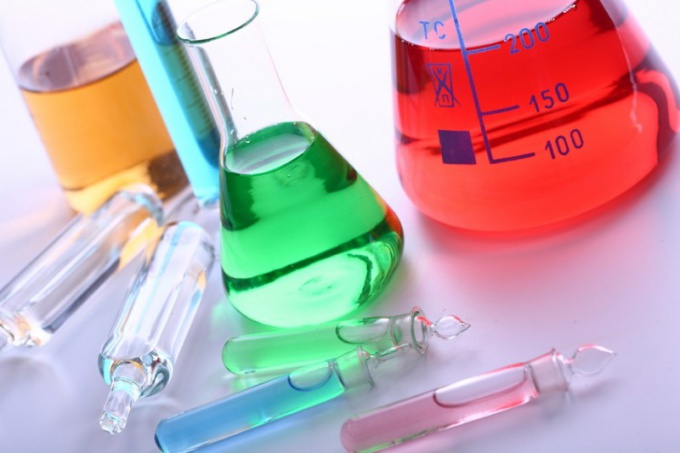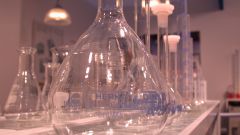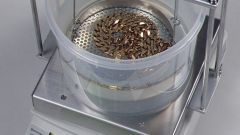Instruction
1
The key formula for the density is ρ=m/V where ρ is the density, m is the mass of the solution, V is the volume. Density can be expressed, for example, in kilograms per liter or grams per milliliter. In any case, it shows how much the mass of a substance per unit volume.
2
The mass of solution is mass of liquid and mass of dissolved substances: m(solution)=m(liquid)+m(solute). The mass of solute and volume of solution can be found from the known values of concentration and molar mass.
3
For example, in the problem given molar concentration of the solution. It is denoted by the chemical formula of the compound in square brackets. So, entry [KOH]=15 mol/l means that in one liter of solution contains 15 mole of potassium hydroxide.
4
Molar mass of KOH is 39+16+1=56 g/mol. Molar masses of elements in the periodic table, they are usually below the item name. The amount of substance, mass of a substance and its molar mass are related by ν=m/M where ν is the amount of substance (mol), m is the mass (g) M – molar mass (g/mol).
5
The solutions, in addition to the liquid, there are also gas. In this case, you need to understand that equal volumes of gas close to ideal, under the same conditions contains the same number of moles. For example, under normal conditions one mole of any gas occupies a volume of Vm=22.4 l/mol, which is called molar volume.
6
In a gas the density of the solution may need a ratio that establishes the relationship between amount of substance and volume: ν=V/Vm where ν – quantity of the substance, V is the solution volume, Vm is the molar volume, a constant value for the given conditions. As a rule, in such problems is discussed that the conditions are normal (n.).



